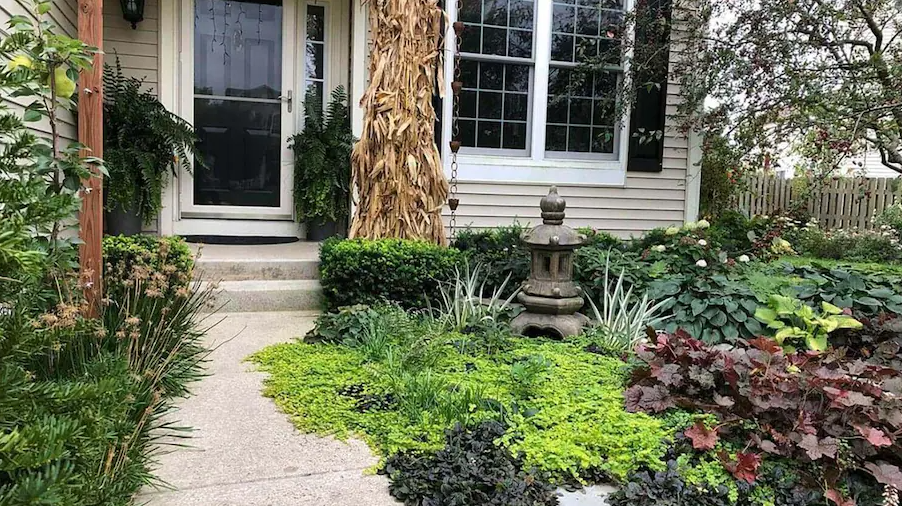Enhance your growing areas with vertical gardening. Whether you’re creating an herb garden, decorating a trellis, or adding color while saving space, vertical gardening is a great option.
Vertical gardening, like a vertical plant wall, is a popular trend in gardening. It’s been around for a long time—have you ever grown a vine on a fence or trellis? Vertical gardening features can bring focus to an area or hide an unsightly view. It works well in both outdoor and indoor spaces. Start your vertical gardening journey with our guide!

Vertical Gardening Basics
In vertical gardening, you use structures like trellises or tall trees to make garden areas or separate hidden spots to explore. Trellises can be attached to the ground or put in big pots, letting you grow vines, flowers, and veggies in vertical garden pots. This saves a lot of space compared to regular gardening.
Vertical gardening is great for people in apartments, urban areas with limited space, or anyone with a small outdoor area. Indoors, you can grow small houseplants vertically by making living walls. This adds color and texture and helps clean indoor air.
In places where it gets cold, having houseplants in vertical gardens helps add moisture to the air. This is important when the heater is on and dries out the air. More and more hotels and offices are using living walls and vertical gardens indoors and outdoors. Even though vertical gardens might need more water, they help air move around better.

Vertical Plant Wall
Green walls are a trendy form of vertical gardening. Some are just walls covered with climbing plants, while others have a system where plants can grow inside. Patrick Blanc, a French botanist, is known for starting green walls. His first project was on the Museum of Science and Industry in Paris in 1988. Since then, he’s made many others around the world, both indoors and outdoors. He calls his projects “living paintings” or “vegetal walls.”
You’ll need metal framing, rigid plastic, and felt to make a vertical plant wall like Blanc’s. The frame can hang on a wall or stand-alone. The plastic makes the wall waterproof. Plants grow in the felt, which holds water and fertilizer evenly. Choose plants based on light and other growing needs.
Some plant wall systems have room for soilless potting mix, allowing different kinds of plants to grow. They also come with irrigation systems. Along with watering and adding fertilizer, you’ll need to do other maintenance tasks like trimming, cleaning, removing weeds, and occasionally replacing plants. Since vertical plant walls are heavy, it’s important to consult a structural expert to ensure your wall can support the weight.

Vertical Gardening Plants
Many different plants can be used in a vertical garden, depending on the amount of light available. Here are some common choices for traditional vertical planting:
Annual Vines
These annual flowering vines are lightweight climbers suitable for vertical gardens: black-eyed Susan vine (Thunbergia alata), cardinal climber (Ipomoea x multifida), cypress vine (Ipomoea quamoclit), moonflower (Ipomoea alba), scarlet runner bean (Phaseolus coccineus), and hyacinth bean (Dolichos lablab). They thrive in full sunlight.

Perennial Vines
Perennial vines that are suitable for vertical gardens and easy to grow include clematis hybrids, American bittersweet (Celastrus scandens), and ivy (Hedera selections). They thrive in full sunlight, although clematis prefer their flowers in the sun and their roots in the shade.
Shady Vines
Vines suitable for vertical gardening in shaded areas include hardy kiwi (Actinidia kolomikta), chocolate vine (Akebia quinata), Dutchman’s pipe (Aristolochia macrophylla), and climbing hydrangea (Hydrangea petiolaris).

Edible Plants
Plants suitable for vertical gardening and edible produce include fruiting vines like kiwi (Actinidia deliciosa) and Siberian gooseberries (Actinidia arguta), edible flowers such as vining nasturtiums, and vertical garden vegetables like peas, squash, tomatoes, and pole beans.
Columnar Plants
Columnar plants are great for vertical gardening and don’t always need support structures. You might want to try planting columnar apple trees, arborvitae (Thuja occidentalis), junipers (Juniperus scopulorum), or Lombardy poplars (Populus nigra).
Vertical Herb Gardening
Columnar plants are great for vertical gardening and don’t always need support structures. You might want to try planting columnar apple trees, arborvitae (Thuja occidentalis), junipers (Juniperus scopulorum), or Lombardy poplars (Populus nigra).

Vertical Gardening Structures
You can use different types of structures like fences, arbors, trellises, and others to grow vertical garden plants. Hanging baskets can also be part of vertical planting. You can set up a drip irrigation system to water your plants easily. If you have a shed or garage, you can add a trellis in front of the wall to support the plants without harming the wall. Make sure to leave some space between the trellis and the wall for air to circulate.
You can make vertical gardening structures on your own. You can use an invisible trellis or a climbing willow frame for indoor gardening. For outdoor gardening, you can build a vegetable trellis for growing edible plants like beans. This trellis will turn into a green arbor, making your yard look nice. You can download our free trellis plan to begin your vertical gardening project.







